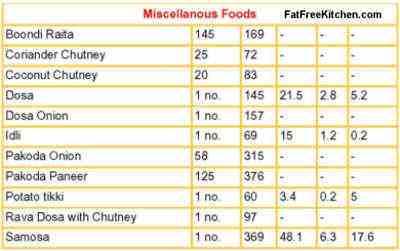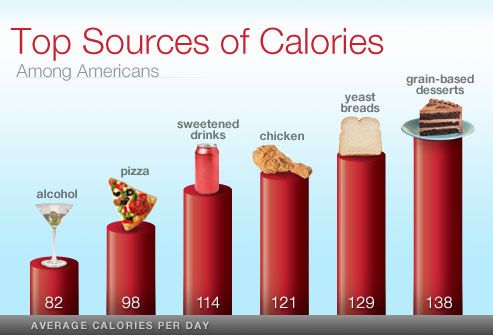Calorie Counter Indian Food Biography
Source(google.com.pk)
With India on the verge of an obesity epidemic, the announcement of the New Dietary Guidelines for Indians comes as a much needed panacea to all in the field of nutrition. These guidelines were drawn up by a group of nutritionists and doctors keeping in mind the current dietary trends of majority of Indians living in big and small cities and the eating trends they seem to be following
Did You Know? The first edition of ′Dietary Guidelines′ was published in 1998 by the National Institute of Nutrition (NIN), and since then there have been numerous socio-economic changes in India. The economic transition has changed the lifestyles of most Indians. These changes in lifestyles of people in the urban areas have also brought with them an increase in lifestyle related diseases like obesity, hypertension, heart diseases and cancer to name a few.
According to NIN, “The shift from traditional to ′modern′ foods, changing cooking practices, increased intake of processed and ready-to-eat foods, intensive marketing of junk foods and ′health′ beverages have affected people′s perception of foods as well as their dietary behaviour. Irrational preference for energy-dense foods and those with high sugar and salt content pose a serious health risk to the people, especially children.”
Our life style is changing rapidly. Food habits are also changing. Physical activity is reduced in current professional as well as domestic lives. Based on these changes, daily food intake should also be changed.
Indians depend mostly on American studies and suggestions for confirming daily nutrition requirements. Deciding nutritional requirements was started in 1944 for the first time in India. Average weight of men and women in those days was 55kgs and 45kgs respectively. Presently India is in a peculiar state where most of the citizens are suffering from lack of nutritious food and the remaining are suffering from obesity due to consumption of high caloric food. Changing life styles are causing cancers, blood vessel problems, high blood pressure, diabetes and obesity.
It has been proposed in latest recommendations by ICMR and NIN that daily intake of calories should be reduced.
FYI - The new guidelines, putting it in a nutshell has proposed a reduction in the total requirements in terms of carbohydrates, salt, sugar and fats. The transition is in the increase in protein intake to ensure good muscle build up.
The guidelines suggest:
Carbohydrates: should be the main source of energy for our bodies. Choose from whole grains like semi-polished rice, whole grain atta/flour, ragi, broken wheat/dalia, jowar, whole grain breads, multi grisned breads, brown rice and more which are rich in fiber rather than white rice and refined flours (maida).
Protein: A marginal increase in protein has been recommended for building muscle. This can be obtained by including dals, whole pulses, skimmed milk and curd, lean meat like skinless chicken, fish and egg white. Protein also allows appetite fullness and prevents intake of further carbs.
Fats: The body requires very little fat/oil to provide the essential fatty acids. This can be got from as little as 3 to 4 teaspoons of oil in the food over the period of an entire day. Along with fried foods also avoid saturated foods (oils/fats that are solid at room temperature) like ghee, butter, cream and trans-fat like vanaspati. Experts have suggested using at least two varieties of oil in a day to get the best of each.
Sugar: Avoid excess sugar in the diets in the form of sweets, chocolates, cakes, candies, juices and other soft drinks. As a rule keep you sugar consumption under 6tsp/day. (Note: a bottle of soft drink has anywhere between 8 to 10 teaspoons of sugar).
Salt: Today almost everyone gets far too much sodium from salty foods like pickles, namkeens, ketchups, chips, chutneys along with that present in our day-to day foods. The recommendation is to limit total salt intake to just 1tsp (5gms) /day.
Alcohol: A small peg of not more than 30ml can have beneficial effects on the heart, but at the same time excessive drinking can cause harm to the liver and also add to the calorie intake.
Fiber: Including high fiber foods like fruits, vegetables, salads, whole grains and pulses in the diet on a daily basis will ensure that you get adequate fiber. Experts recommend at least 30gms of fiber in the day.
The idea is to reintroduce Indians to eating a traditional “thali” meal as far as possible and to eat smaller portions of the same. A simple thali meal that consists of some rice/phulkas with a sabzi, dal, salad/fruit and curd is any day better than having a meal of biryani or fried rice.
According, to Dr Anoop Misra who led the consensus group: "While these guidelines are applicable to Asian Indians in any geographical setting, they are particularly applicable to those residing in urban and in semiurban areas. Proper application of these guidelines will help curb the rising "epidemics" of the metabolic syndrome, diabetes, and heart disease in Asian Indians".
Shweta Uchil-Purohit, dietitian at DesiDieter says “We at DesiDieter have been following our own set of guidelines that are actually similar to the new guidelines. This is because we felt that most Indians today lead sedentary lifestyles and also tend to eat a lot of calorie rich foods that are not always nutritious. The publishing of the new guidelines now gives us the much needed backing”.
Divya Sanglikar, nutrition expert at DesiDieter feels, “The new guideline for Indians is not unique to us. The traditional Indian palette is always considered healthy, second best to Mediterranean meals. But, the fast paced lifestyle and the boom in food processing industry is responsible for people becoming “nutritionally lazy”. Preparation of wholesome well-balanced thalis is being replaced with instant take-aways and two minute noodles. Moreover, Indian food industry lacks the vigilant body to control the nutritional value of food processed. All of these factors have been responsible for us Indians forgetting “how and what to eat”. The new guidelines are surely a reinforcement of known facts and it is up to health experts to help people imbibe them to the best.”
Tina Khanna, nutrition expert at Healthji critically analyses the new guidelines. According to her, the new guidelines are actually tweaked version of the previous (1998) version. She feels that the new version needs to be a lot more people friendly and requires more layman interpretation. It doesn’t clearly define what measures people need to adopt for a overall healthy lifestyle. Moreover guideline for salt intake, less than 5 gm a day, is very sound but how to go about to achieve this is a million dollar question. Surveys indicate present consumption level is estimated to be around 10-13gm per capita per day. It is vital that the Indian food industry make an earnest effort to cut down on use of salt in packed foods voluntarily and catering establishment should take a conscious and collective decision to make their preparations with low salt. Ultimately, leaving the choice of adding more to the consumer, if necessary, on the serving table.
Calorie Counter Indian Food Indian Food Recipes Images Menu Calorie Chart Thali Photography Pictures Photos Dishes Items Photos Pics

Calorie Counter Indian Food Indian Food Recipes Images Menu Calorie Chart Thali Photography Pictures Photos Dishes Items Photos Pics Images

Calorie Counter Indian Food Indian Food Recipes Images Menu Calorie Chart Thali Photography Pictures Photos Dishes Items Photos Pics Images

Calorie Counter Indian Food Indian Food Recipes Images Menu Calorie Chart Thali Photography Pictures Photos Dishes Items Photos Pics Images

Calorie Counter Indian Food Indian Food Recipes Images Menu Calorie Chart Thali Photography Pictures Photos Dishes Items Photos Pics Images

Calorie Counter Indian Food Indian Food Recipes Images Menu Calorie Chart Thali Photography Pictures Photos Dishes Items Photos Pics Images

Calorie Counter Indian Food Indian Food Recipes Images Menu Calorie Chart Thali Photography Pictures Photos Dishes Items Photos Pics Images

Calorie Counter Indian Food Indian Food Recipes Images Menu Calorie Chart Thali Photography Pictures Photos Dishes Items Photos Pics Images

Calorie Counter Indian Food Indian Food Recipes Images Menu Calorie Chart Thali Photography Pictures Photos Dishes Items Photos Pics Images

Calorie Counter Indian Food Indian Food Recipes Images Menu Calorie Chart Thali Photography Pictures Photos Dishes Items Photos Pics Images

Calorie Counter Indian Food Indian Food Recipes Images Menu Calorie Chart Thali Photography Pictures Photos Dishes Items Photos Pics Images
No comments:
Post a Comment